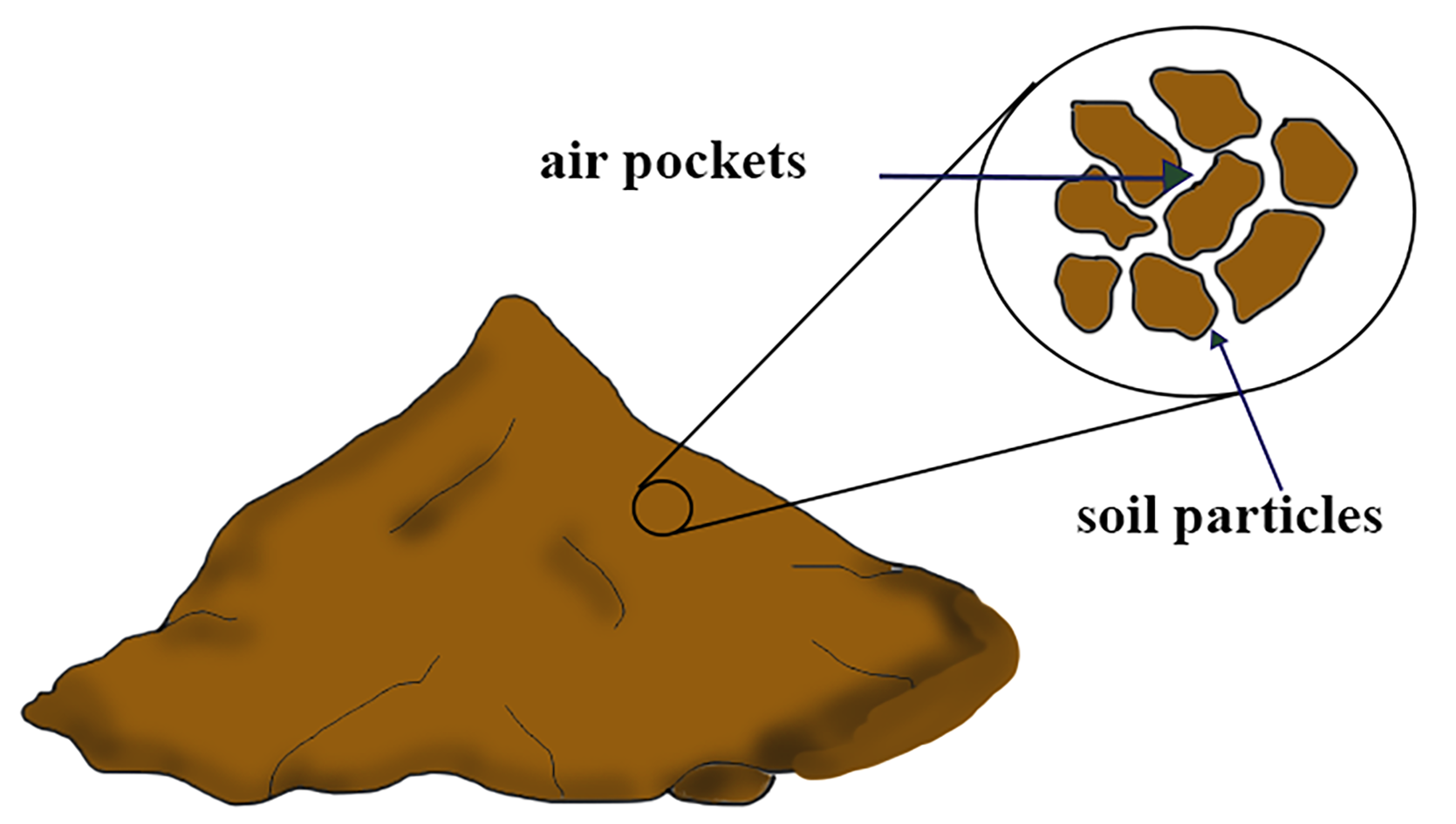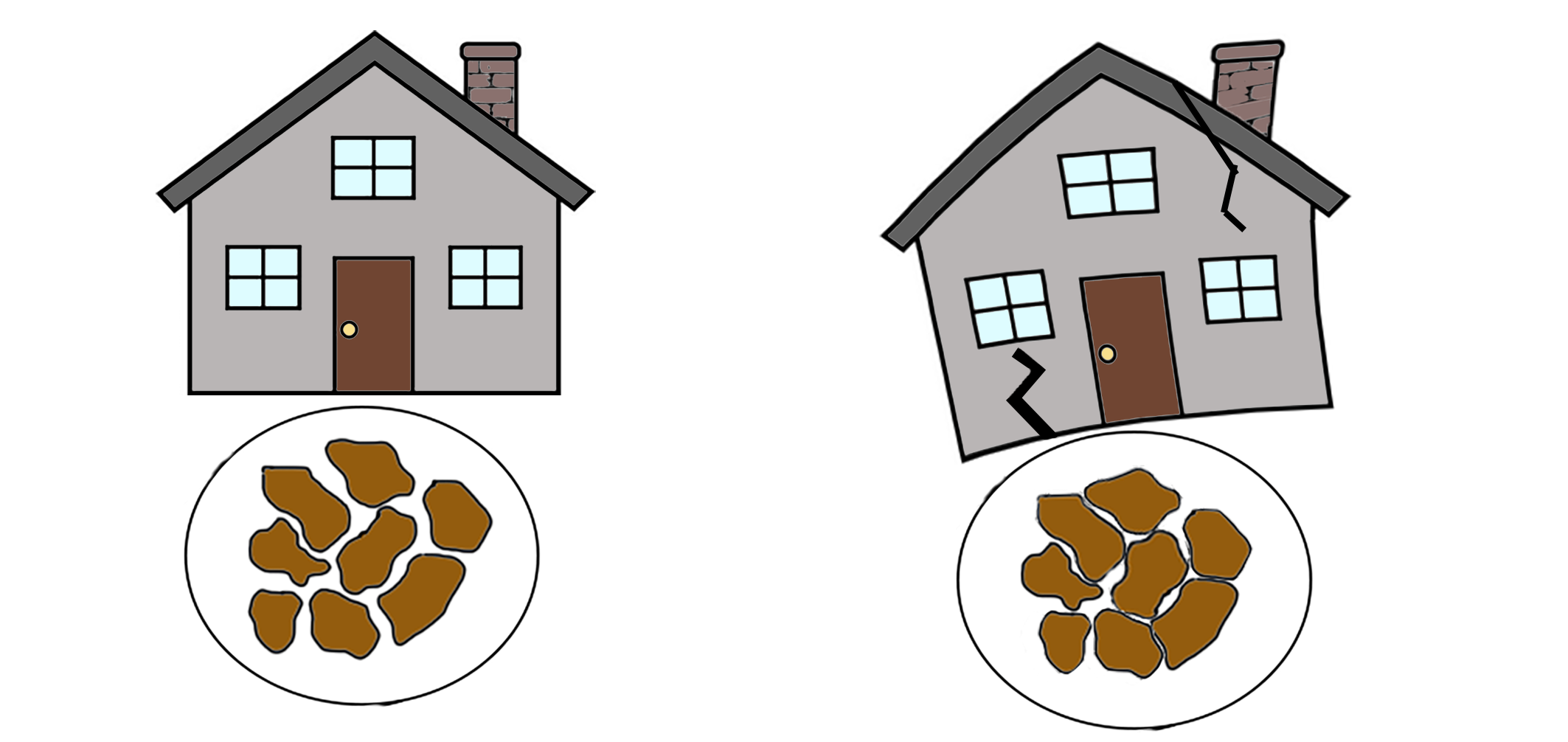
Soil technicians work in the civil engineering field. They need a strong understanding of soil density to advise on construction sites. A civil engineer is the professional who will ultimately decide on the characteristics of a building, such as how many floors can be supported by the terrain. However, the engineer will rely on the technical report and soil analysis provided by a soil technician.
Soil is composed of soil particles and air pockets (pores). A highly compacted soil has fewer and smaller pores. As a result, the soil particles are closer to each other. Soil that is not compacted has more and/or larger pores.

Figure 1. The composition of soil.
Bulk density is an indicator of how compacted the soil is. It is calculated as the dry weight of soil divided by its volume. This volume includes the volume of soil particles and the volume of pores among soil particles. The higher the number of air pockets or their size, the lower the density of the soil.
Bulk density is typically expressed in g/cm3. Bulk density values reflect the soil’s ability to function for structural support as well as allowing roots’ growth.
A heavy structure’s load can cause the soil particles to compact and settle. Because the soil will compact unevenly, this can cause structure failure.

Figure 2. A heavy structure’s load can cause the soil to compact. One of the possible consequences of this phenomenon is structural damage.